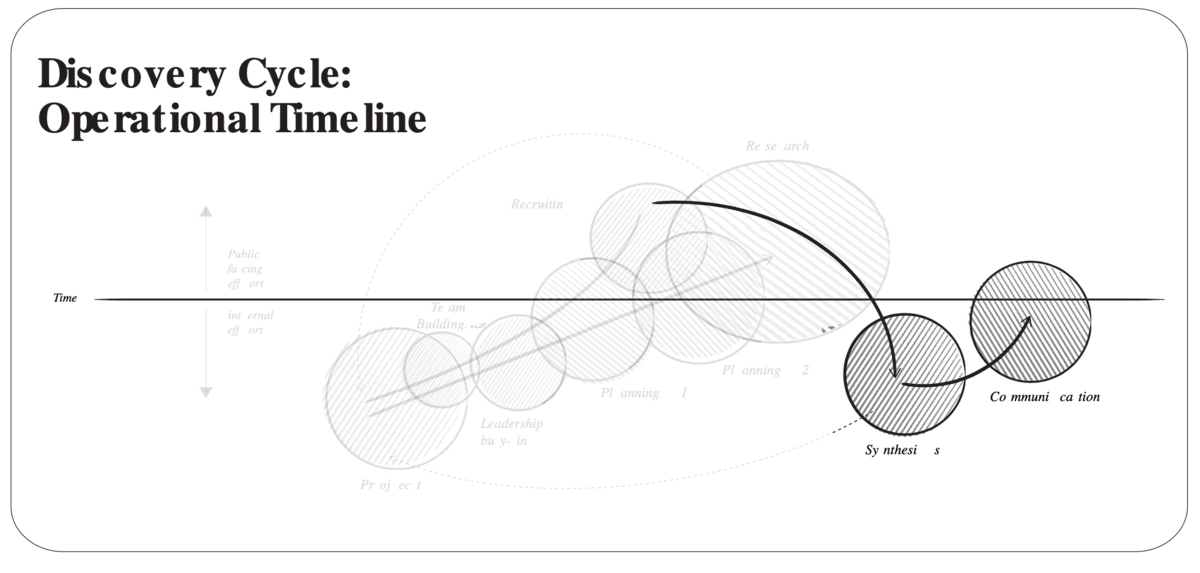Discovery operations guide

Synthesis
Bringing together interviews and qualitative research to look for common patterns and themes
Reading time: 3 minutes

Synthesis is when your research team brings together all of the interviews and qualitative research they’ve gathered, and looks for patterns and themes across the research. Sometimes, you’ll do synthesis in research pairs, and sometimes, you’ll bring your synthesized research to a larger group for further, cross-group synthesis.
Think of synthesis as a group effort to filter all of your field data through the lens of the project brief. Take each interview or workshop or observation, and during synthesis, look at them through the single, project brief lens, to focus the research together according to patterns, similarities, or dissimilarities, to identify data that is most relevant to the research topic. Then, reflect on the relevant data and work to identify common patterns or trends.
Search for the “why”
HCD discovery can help us find the root causes of attitudes, feelings, or behaviors. Target your research to probe into why something is the way it is, then the root cause, or the reason why, will be discovered during this synthesis phase.
Environment and materials
Find a quiet space where you and your team can talk and interact over the course of a half-day or day. Make sure this space has tables or desks, adequate lighting, and, ideally, clear window and wall spaces.
Have on-hand the following supplies:
- Pens
- Paper
- Tape
- Sticky notes
- Markers
- Presentation-style paper tablets or rolls.
The visual aids you make with these materials will help you sort, arrange, and rearrange your research findings to more easily discover patterns and trends.
How to collaborate
Synthesis is a collaborative process with your whole team. Although it is not brainstorming, synthesis can look and feel similar. The crucial difference is that a brainstorm is mostly ad hoc, random thinking, while synthesis thinking is rigorously guided by a larger research question or topic. You collaborate, process information, document, and in some cases generate ideas. The following guidelines from Ideo.org’s Design Kit, are useful to keep in mind during synthesis.
- Defer judgment: Be open to any and all observations and ideas from anyone. Resist the urge to judge or edit others or yourself.
- Build on the ideas of others: Listen and encourage others. Think of how you can add to others’ ideas and support them.
- Stay focused on the topic: Keep the greater purpose in mind. Know the scope of the synthesis and stay in bounds.
- One conversation at a time: Be present in the moment. Give your full attention to the person speaking and listen first.
- Go for quantity: This applies when you are either transcribing things you learned or when you’re generating ideas. You can edit later.
Invite each person in the room to contribute, especially if one or two people seem to be dominating the conversation.

